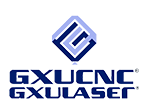In recent years, technological progress has led to major developments in the field of CNC engraving machines. One such advancement is the integration of visual positioning capabilities into these machines. Known as vision positioning CNC milling, this innovative feature has revolutionized the field by offering numerous advantages that increase precision, efficiency and productivity.
Visual positioning refers to the ability of CNC engraving machines to accurately detect and locate workpieces using visual aids such as cameras or sensors. The technology utilizes image recognition algorithms to analyze the features of the workpiece and align them with the required reference points. There are several benefits that can be realized by integrating vision positioning into a CNC router.
One of the main advantages of visual positioning CNC routers is increased accuracy. Traditionally, CNC machine tools have relied on mechanical means to position workpieces, which can introduce slight errors due to variations in mechanical components. Vision positioning removes this inaccuracy by using real-time imaging to precisely detect and align workpieces. This ensures that the engraving process is performed with the utmost precision, resulting in a final product of exceptional quality and detail.
In addition to improving accuracy, visual localization can save a lot of time. In a traditional CNC router, the workpiece needs to be manually placed and adjusted to align with reference points. This process can be time-consuming and tedious, especially when dealing with complex geometries. With vision positioning technology, the machine can automatically detect and align the workpiece, eliminating the time and effort required for manual adjustments. This reduces setup time, which speeds up production and improves efficiency.
Vision positioning in a CNC router can also increase productivity by minimizing errors. Traditional positioning methods often rely on the skill and experience of the operator, which can lead to human error. In contrast, visual positioning technology relies on precise imaging and analysis, greatly reducing the chance of operator error. This minimizes rework and material waste, increasing productivity and saving costs.
Another advantage of vision positioning for CNC routers is the ability to handle irregular or asymmetrical workpieces. Due to their unconventional shape or lack of standardized reference points, traditional positioning methods can be difficult to accurately locate such workpieces. Vision positioning technology, however, analyzes the unique features of each workpiece and aligns them accordingly, ensuring precise engraving regardless of the shape or size of the object.
In addition, visual positioning allows for greater flexibility in the engraving process. Using traditional methods, changes in designs or workpieces require manual adjustments, causing delays and interruptions in production. However, vision positioning systems can quickly adapt to changes by analyzing new reference points and adjusting the engraving process accordingly. This flexibility allows for on-the-fly modifications, reducing downtime and improving overall workflow efficiency.
In conclusion, the integration of vision positioning technology into CNC engraving machines brings numerous advantages to the field. Increased precision, time savings, increased productivity, the ability to handle irregular workpieces, and increased flexibility are just some of the benefits this technology offers. These advancements not only contribute to the superior quality and detail of engraved products, but also simplify the manufacturing process, thereby increasing efficiency and profitability. With the continuous development of visual positioning CNC routers, we can expect more exciting developments in this field in the future.
Post time: Aug-30-2023



